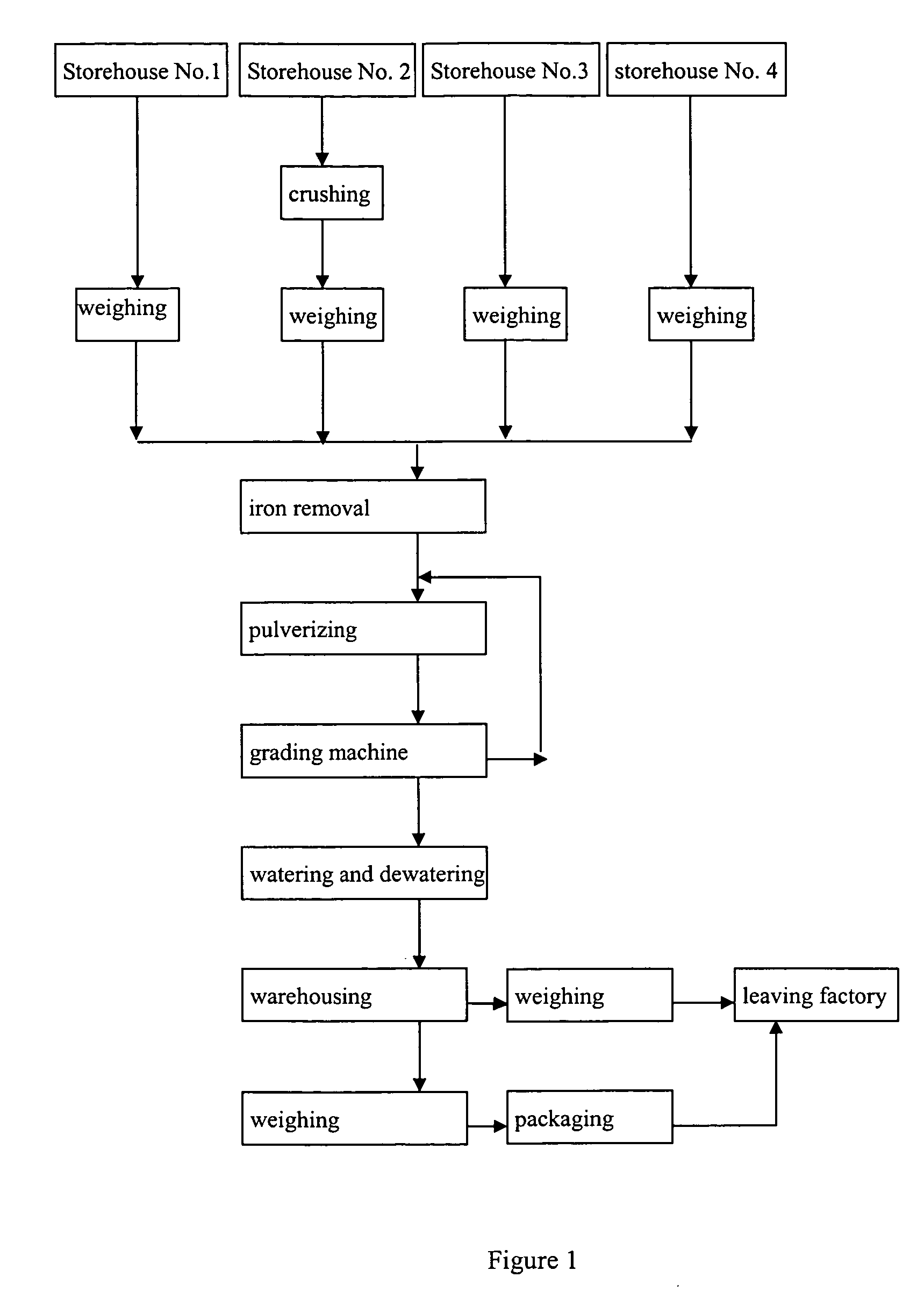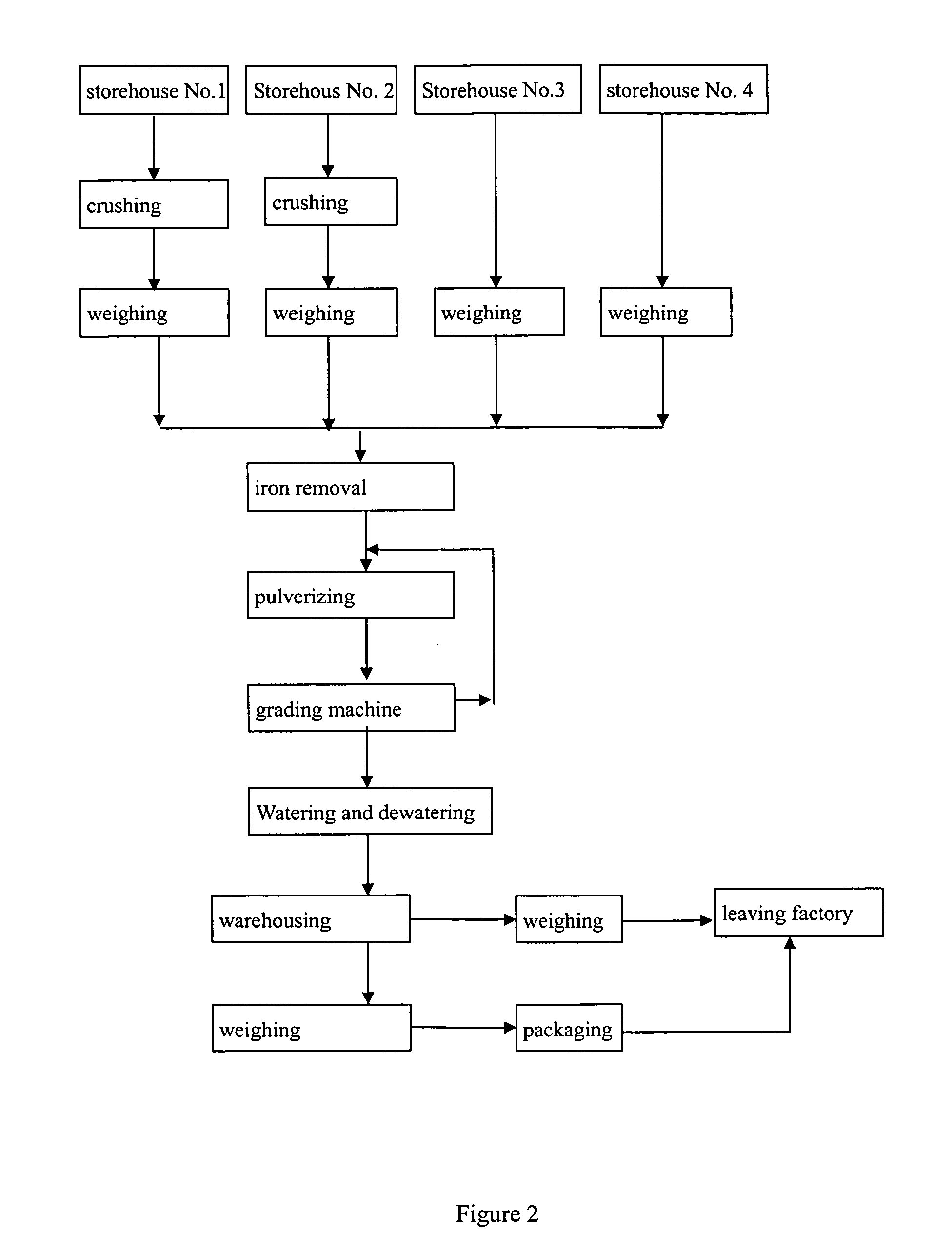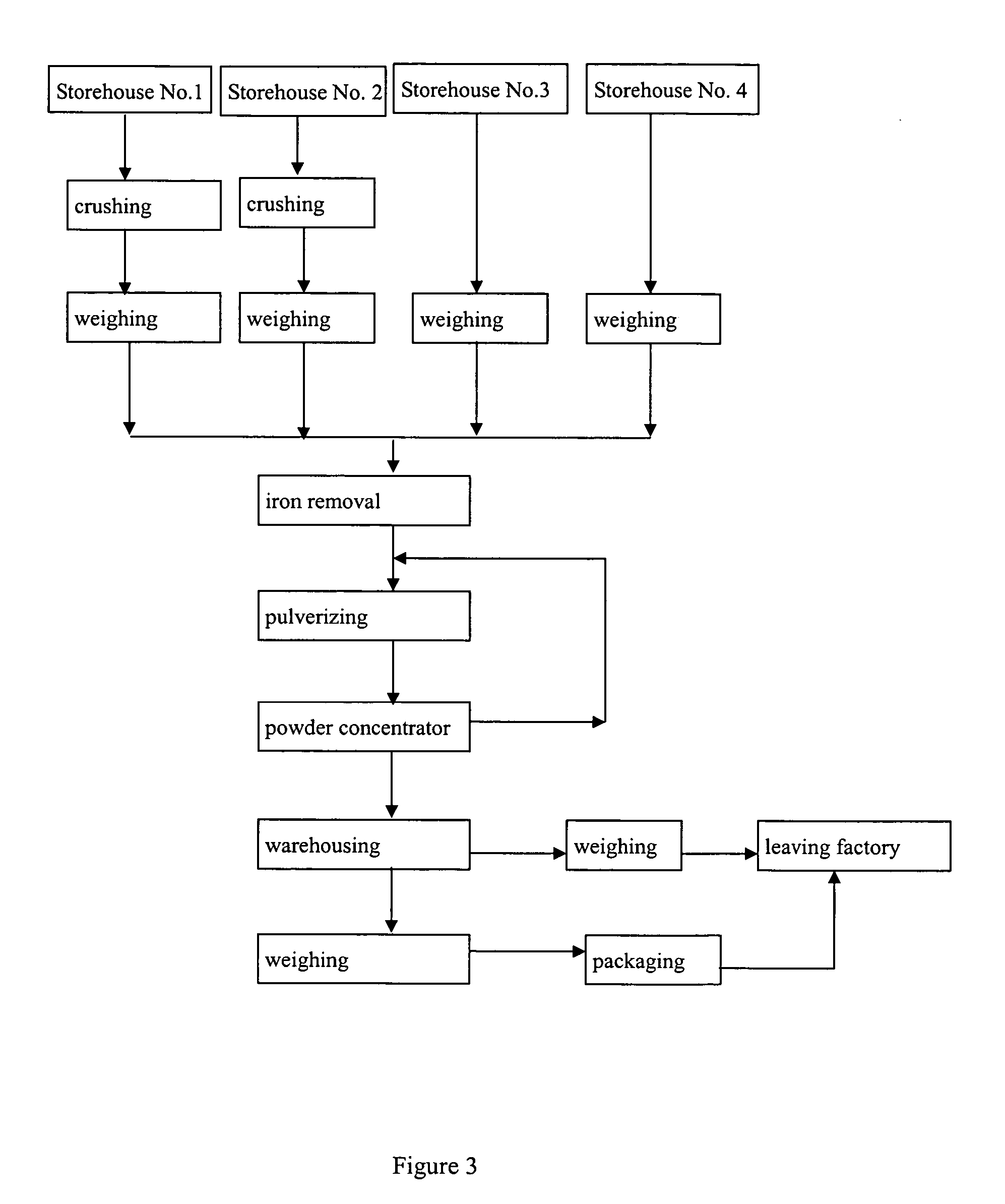Two-component wet cement, process and application thereof
a wet cement and two-component technology, applied in the field of new sialite binary wet cement, can solve the problems of rapid increase of fly ash, inability to clearly explain the “one component” cement theory, and serious air pollution, so as to save materials and energy consumption, save time, and save construction costs
- Summary
- Abstract
- Description
- Claims
- Application Information
AI Technical Summary
Benefits of technology
Problems solved by technology
Method used
Image
Examples
example 1
[0166] Comparison tests between dry-milling and wet-milling of metallurgical slag in A region were taken.
[0167] Using same test small mills (φ500*500 mm), and same milling time, test results were as follows: when dry-milling type was chosen, 5 kg starting materials were used, a specific surface area of 3900 cm2 / g was obtained; whereas when wet-milling type was chosen, 7.5 kg starting materials and 3.75 kg water were mixed and milled, and a specific surface area of 4000 cm2 / g was obtained. It can be seen that, in the case where the materials having approximately same fineness are obtained, wet-milling efficiency is 150% or more of dry-milling efficiency.
example 2
[0168] Comparison tests between dry-milling and wet-milling of the same metallurgical slags as used in Example 1 were taken.
[0169] Using same test small mills, and same milling time, when dry-milling type was chosen, 5 kg starting materials were used, a specific surface area of 3900 cm2 / g was obtained; whereas when wet-milling type was chosen, 5 kg starting materials and 2.5 kg water were mixed and milled, and a specific surface area of 4800 cm2 / g was obtained. It can be seen that, in the case where same milling time is used to mill the materials having same weights, the finesses obtained by the wet-milling is much higher than the finesses obtained by the dry-milling.
example 3
[0170] Cement mortar comparison tests between the sialite binary wet cement of the present invention, and 42.5 grade and 52.5 grade Portland cement were made. In these tests, the following test standards were quoted: TEST METHODS FOR WATER REQUIREMENT FOR NORMAL CONSISTENCY, SETTING TIME AND SOUNDNESS OF THE PORTLAND CEMENTS (GB1346-89), TEST METHOD FOR FINENESS OF CEMENT (GB1345-91), TEST METHOD FOR STRENGTH OF HYDRAULIC CEMENT MORTAR (ISO method) (GB / T17671-1999). The testing results are shown in Table 4 and Table 5.
TABLE 4physical property of the sialite binary wet cementFineness (%)setting time (h:min)Volume0.08 mm standardinitialfinalGradesstabilitysieve triagesettingsetting42.5 grade Portlandacceptable3.853:204:55cement52.5 grade Portlandacceptable3.52:504:43cementwet cementacceptable3.253:105:50
[0171]
TABLE 5Mechanical property of the sialite binary wet cementflexuralcompressionstrength (Mpa)strength (Mpa)Grades3 d28 d3 d28 d42.5 grade Portland4.27.117.245.5cement52.5 grade ...
PUM
| Property | Measurement | Unit |
|---|---|---|
| Fraction | aaaaa | aaaaa |
| Fraction | aaaaa | aaaaa |
| Fraction | aaaaa | aaaaa |
Abstract
Description
Claims
Application Information
 Login to View More
Login to View More - R&D
- Intellectual Property
- Life Sciences
- Materials
- Tech Scout
- Unparalleled Data Quality
- Higher Quality Content
- 60% Fewer Hallucinations
Browse by: Latest US Patents, China's latest patents, Technical Efficacy Thesaurus, Application Domain, Technology Topic, Popular Technical Reports.
© 2025 PatSnap. All rights reserved.Legal|Privacy policy|Modern Slavery Act Transparency Statement|Sitemap|About US| Contact US: help@patsnap.com



